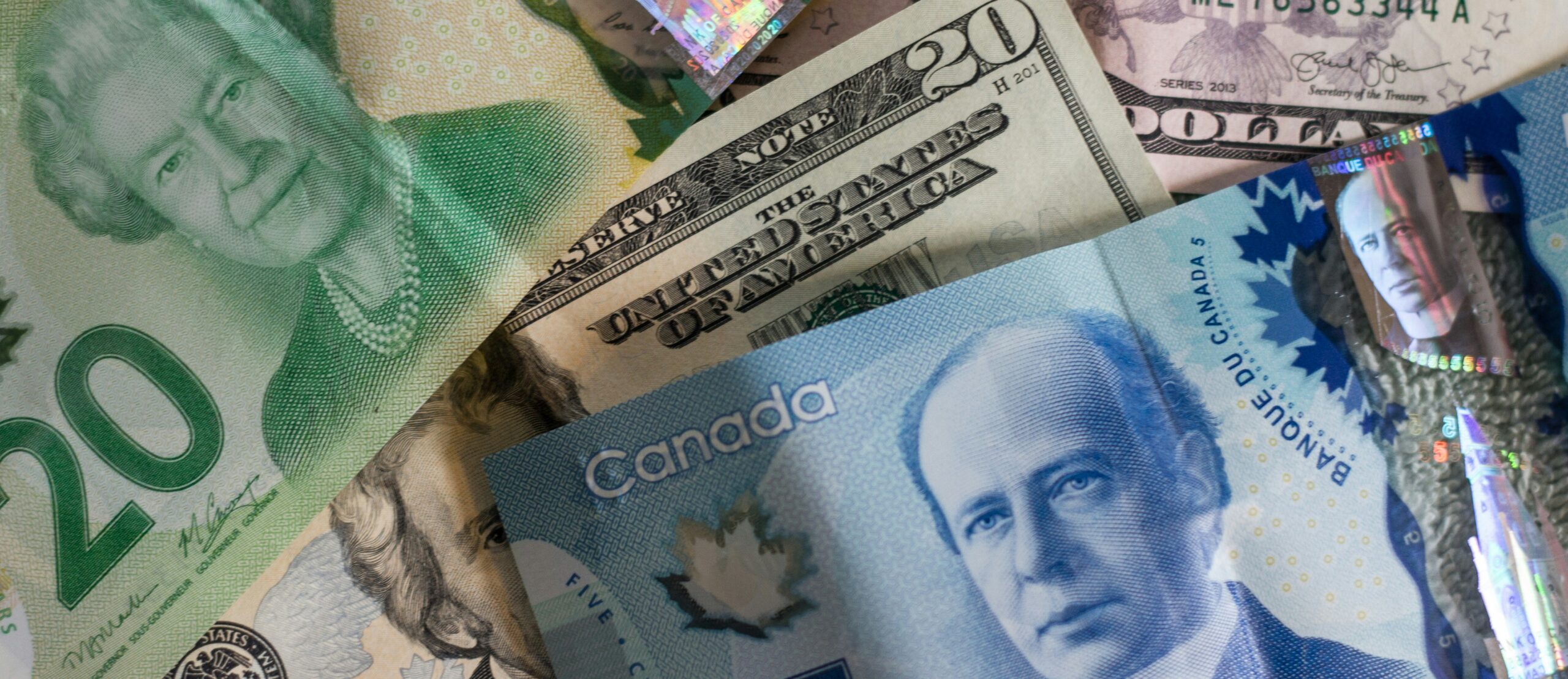Canadian Dollar Update – Canadian dollar catches a bid
- Traders getting cautious as tariff deadline nears.
- BoC’s BOS Survey too stale to count.
- US dollar trading quietly but with negative bias.
USDCAD open 1.3678, overnight range 1.3675-1.3695, close 1.3682, WTI 65.28, Gold 3386.24
The Canadian dollar drifted higher on broad US dollar weakness ahead of a North American trading session without any actional economic data.
Yesterday’s BoC Business Outlook Survey was obsolete before it was released as it was taken in the middle of May. Any optimism was erased after Trump announced Canadian tariffs would be 35% on July 10.
Trump’s August 1 tariff hike deadline put a damper on markets as is uncertainty around the Fed. Trump needs lower rates to help pay for the $3.4 trillion hole created by his so-called “big, beautiful bill,” and is trying to fire Powell for cause due to Fed building renovation cost overruns.
Asian stocks closed in the green, though gains were modest. Australia’s ASX 200 added 0.10%, Japan’s Topix was unchanged, and the Hong Kong Hang Seng climbed 0.54%.
Europe markets opened soft, and losses deepened with the German Dax down 0.82%, the CAC 40 off by 0.48%, and the FTSE 100 hovering around flat. S&P 500 futures are treading water, and the U.S. 10-year Treasury yield is steady at 4.38% percent as of 7:35 a.m. EDT.
EURUSD is near the top of its 1.1682 to 1.1710 range, buoyed by hopes that the EU and U.S. can strike a tariff deal, and helped by a slightly weaker U.S. dollar. While the two sides enjoy a massive $1.97 trillion trade relationship, Trump is threatening to slap a 30 percent tariff on EU imports.
GBPUSD inched through a narrow 1.3462 to 1.3500 range and sits at 1.3487 in New York trading. Support is coming from falling yields in both the UK and global bond markets, which is helping to calm nervous gilt investors. The technical outlook has turned bullish. A break above 1.3450 unwound the downtrend that started in early July, and now 1.3620 is the next upside target.
USDJPY is hovering mid-range between 147.25 and 147.95. Japanese traders returned from a long weekend and are digesting the political fallout after Prime Minister Ishiba lost his majority, raising questions about how U.S.–Japan trade talks will unfold.
AUDUSD stayed within a 0.6504 to 0.6531 band, mostly reacting to shifts in broader U.S. dollar sentiment. RBA minutes showed policymakers suspect inflation may be running hotter than the data suggest. They cited global risks as the reason for holding rates steady, though members expect to cut them again later this year.









